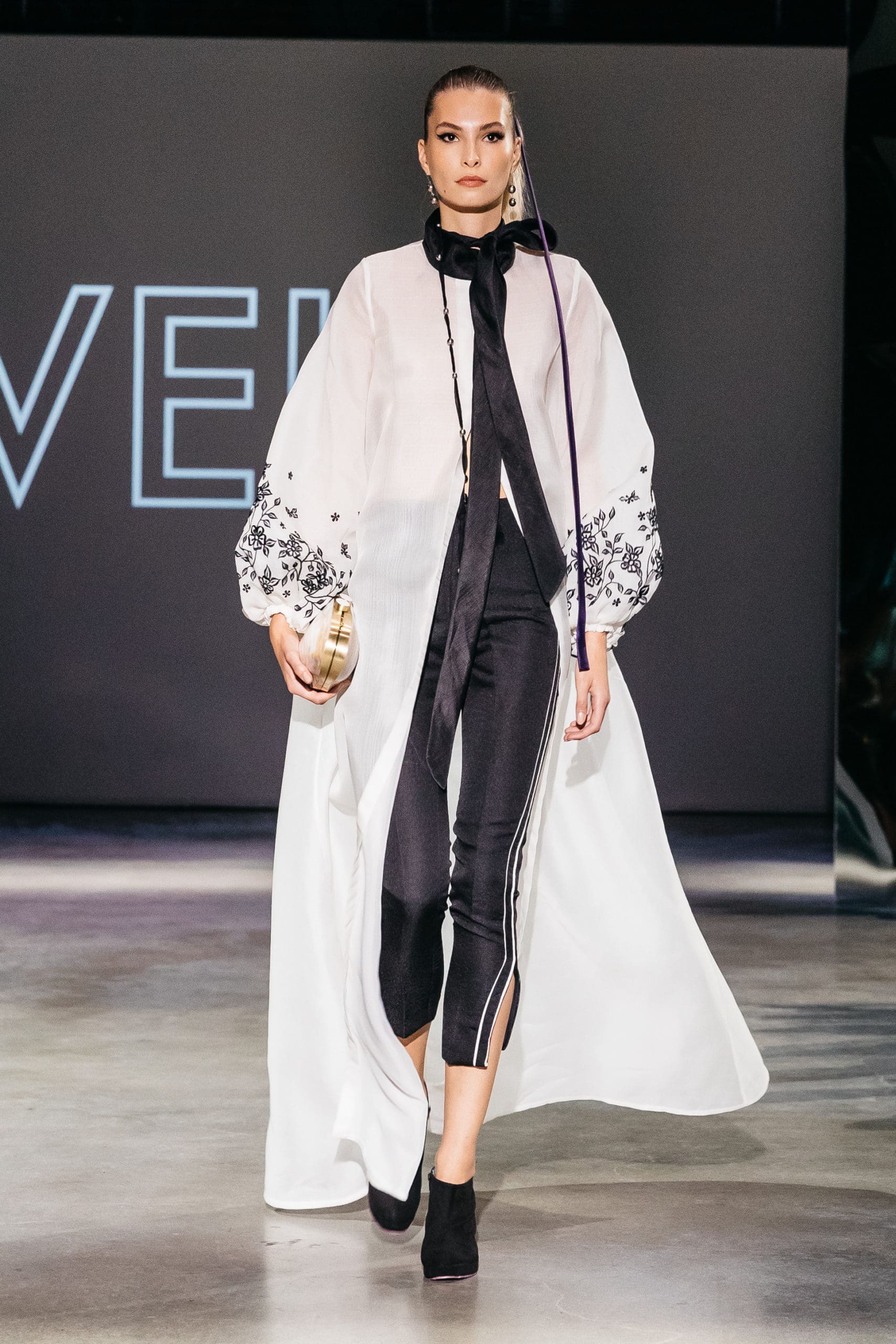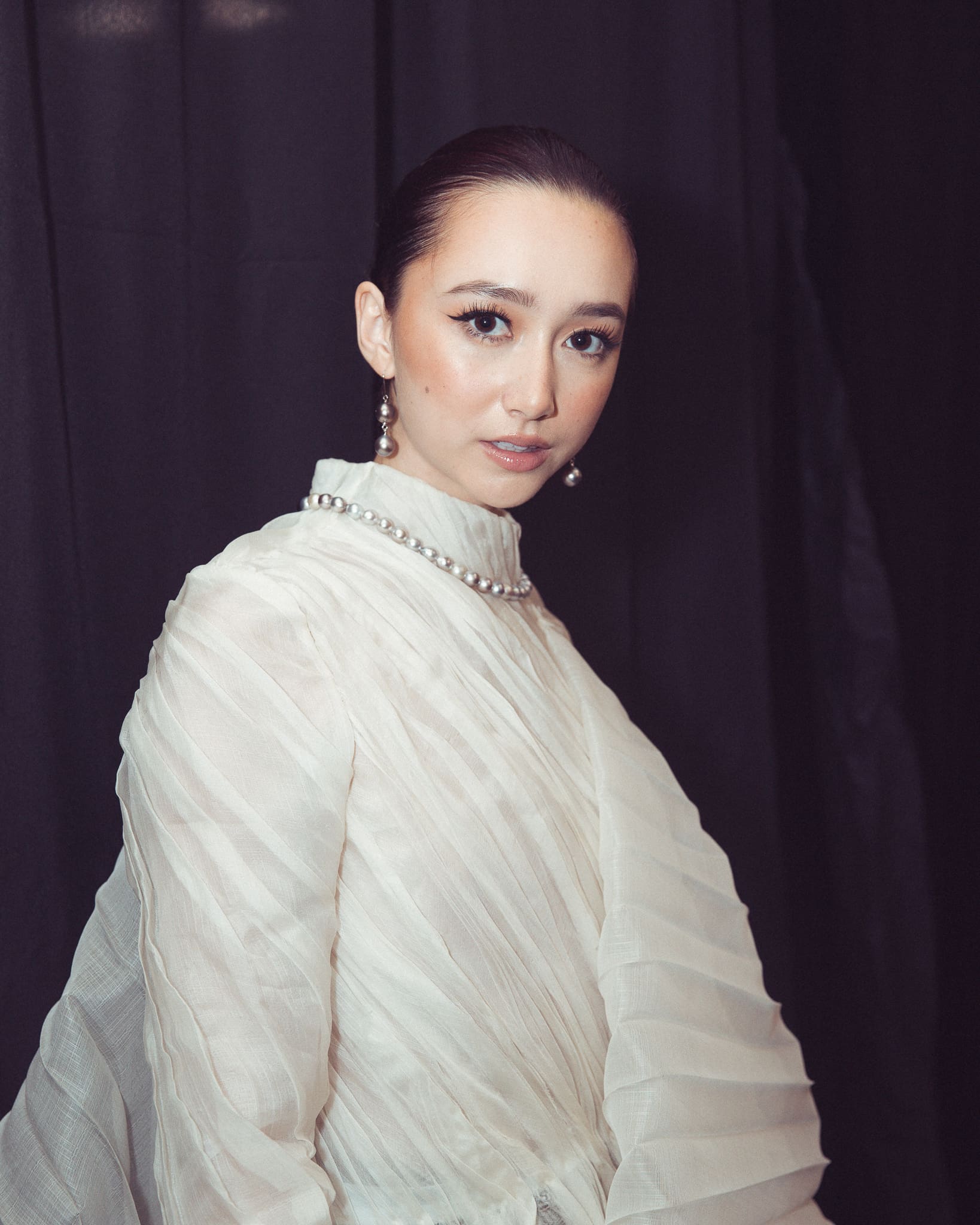Dion Trinidad
The Filipino designer talks about Native Opulence, his homage to the Philippines.
The story of designer Avel Bacudio is synonymous with one word: dedication. Born in Buhi, Camarines Sur, the Filipino designer has always been inspired by his surroundings and integrates his learnings from his humble beginnings into every creation. “I wasn’t born with a silver spoon in my mouth, but I learned how to appreciate and understand beauty while growing up in the sleepy town of Buhi,” Bacudio tells Vogue Philippines.
To help his family of 12, Bacudio sold malunggay at school growing up. After his mother passed away, Bacudio moved to Manila to work as a janitor at a fast food chain, then returned to school to start his foray into fashion. Three years later, after entering a large number of fashion competitions, Bacudio laid the foundations for the Young Designer’s Guild of the Philippines alongside the burgeoning creatives he encountered. From then on, he began collecting accolades such as the People’s Choice Award in the Concours International Des Jeunes Createurs De Mode, and gained recognition in the Asian Fashion Grand Prix Contest, Fashion Connections Singapore, and the Young Fashion Designers Show in China.
Throughout his illustrious career, Bacudio stayed true to his heritage and referenced elements that were close to him. His mother, who was a seamstress and “his first teacher in life and design,” is a constant source of inspiration throughout his collections. He remarks, “She has and will always influence my designs. She is the reason why I became a fashion designer, after all. Everything I learned and saw from her work is already engrained [in] me.” He even recalls how “her clever attention to detail” is evident in each meticulously-crafted piece from “the pattern to the last stitch.”
Aside from his mom, Bacudio also continuously draws from his early beginnings and causes that resonate with him including his personal advocacy, the Northern Luzon Association for the Blind (NLAB). A few years ago, the 46-year-old designer suffered from retinal detachment. Until a successful surgery, his vision was severely limited to only seeing colors and shapes. He shares how the experience moved him to help others suffering through similar fates. “I learned about NLAB and I knew I wanted to help the children there achieve their dreams, despite their disability,” the designer says.
While Bacudio’s collections are always a touch sentimental, Bacudio pays an even bigger tribute to Filipino beauty and craftsmanship in his newest capsule, Native Opulence, which made its debut during Los Angeles Fashion Week. The intricate collection married Filipino culture to experimental silhouettes—a portrait of our mixed roots and our “evolution as Filipinos.” Elements from various Philippine regions were introduced to create a cohesive and artisanal assemblage. He even highlighted the sampaguita and the anahaw in some of his pieces. “They represent the richness and beauty of nature seen in our country,” he says of the flora.
Embroidered billowing sleeves, tailored jackets, pleated trains, softened butterfly sleeves, glittering bodices, and the time-honored terno blouse made their way on the catwalk. From the runway song chosen (a tune reminiscent to the Tinikling) to the traditional textiles, every detail alluded to his roots. He explains, “I knew I wanted a collection that my fellow Filipinos could relate to and give them instant nostalgia. Everything that shaped me from growing up to where I am now, is what inspired me to create this collection—simple but impactful.” Below, Vogue Philippines sits with the acclaimed designer to learn more about his most recent collection.

You sourced shoes from Marikina, bags from Visayas, textiles from Mindanao, and more. How did you select which regions to source elements from?
I researched on the workers, weavers, and small business owners who were doing the techniques and styles I wanted in my collection. These highly-skilled artisans were greatly affected by the pandemic, which is why I was all the more drawn to their craft and resilience. Not only did they help bring my collection come to life, but also allowed me to expand my awareness in supporting and uplifting the communities striving to make exceptional Filipino products from their respective regions and what they specialize in.
How do your other creative pursuits like costume design play into your collections nowadays?
Everything has to be meaningful. In costume design, you can’t just create a beautiful garment. It has to fit the character who will wear the outfit or the situation in the script or story. In coming up with my collections, each piece has to suit the story I want to tell. Sometimes I work with a theme in mind, or a character I formulate in my head.
How did the collaboration between different embroidery techniques and hand-weaving from different Filipino regions (Luzon, Visayas, and Mindanao) make Native Opulence unique?
By bridging the gap brought by the limitations of the pandemic and distance. [By] finishing a bomber jacket, bag, or dress from the collection, these artisans were able to “work together.” We made the impossible, possible and at times, under pressure. It’s part of the story I wanted to tell—to celebrate Filipino culture and craftsmanship, and showcase that on the global stage.
Can you tell us about the finale look?
This means that you can look simple, but impactful. It also says a lot about my design aesthetic. My core will always be streetwear so the wearability of a garment matters to me. This look shows a juxtaposition of a feminine look with an edgy, sporty touch. I believe it has that quiet elegance, which is very Dalagang Pilipina.


You’re working with so many communities from different regions. Have you become close to the weavers? Are there any lessons about life that you’ve learned from the artisans who you have collaborated with?
Of course, I will continue working with these communities in my upcoming collections. We have to help them grow their businesses, plus showcase their art. They play a vital role in improving the Philippine fashion industry. I’ve learned to keep going and never give up. Some of these businesses were already dying, but with their persistence and hard work, they are now going strong and [are] back on track. Also, patience is a virtue. You will be amazed by the results of not rushing things.
Below, swipe to view the collection.
- Filipino Designer Martin Bautista’s 15th Anniversary Collection Is “A Meditation In Growth”
- Filipino Designers Issa Pressman, Thian Rodriguez, and Kyle Cruz Take To The Catwalk For Standout Collections
- Filipino-American Designer Michelle Ochs’ Latest Collection Is A Love Letter to The Female Form
- The Class Of Spring/Summer 2023: Filipino Designers Take Over LA Fashion Week


















